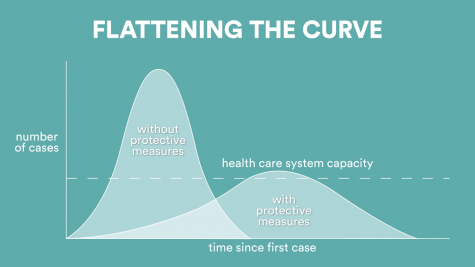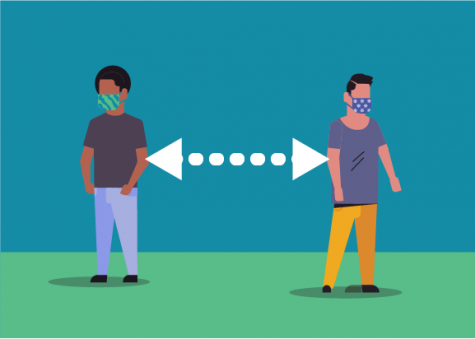Freedom or Safety? – The Ethics and Philosophy of Social Distancing
May 18, 2020
“Social Distancing” has become a well-known phrase in modern societies across the globe as more people have become infected with the Coronavirus disease 2019 (COVID-19). Social distancing is one of the most effective measures among the various steps that the CDC has provided in hopes to slow the growth of the pandemic. To demonstrate this practice, schools across America have closed in-person classes for the rest of the school year, while large gatherings and close contact with others are strongly discouraged by health-care officials.
I believe that this stress on isolation, though dysfunctional, is essential to fighting the spread of the disease due to the fact that COVID-19 is a highly transmittable illness. Though it is inevitable that the Coronavirus will have a large impact on the world, communities are working hard to “flatten the curve” of daily cases making the health care workers’ ability to help feasible. The cough or sneeze of an infected person can travel as far as six feet causing distancing to become an integral part to making a change.

Yet, there are downsides to making such a drastic shift in everyday life. The demand to live life with extreme social limits can affect the human psyche immensely. Nicole Valtorta, PhD, an epidemiologist at Newcastle University led a study in 2016 that linked loneliness to heightened anxiety, depression, or stress, as well as a disruption in sleep which can negatively affect the body.
Nevertheless, officials say that there are at least three ways to isolate and keep a healthy mental and physical state:
First, staying connected with friends through FaceTime or texting is a great way to keep the mind busy. Second, exercising or going on a walk outside, with masks of course, creates a very beneficial change from the normal scenery of your house. Third, trying new hobbies, like playing an instrument, which might stick in the future. All of these examples are great ways to rejuvenate a bored mind.

This pause on usual social activity has also proven to be extremely helpful for the environment. Because there are fewer operating factories and businesses, along with fewer cars on the road and planes in the sky, many places that have been practicing social distancing have seen a significant decrease in air pollution and increase in the visibility of wildlife.

In some areas of China, there was a 40% drop in nitrogen dioxide levels, a dangerous chemical that leads to respiratory problems if breathed in over long periods of time. The world’s largest polluter was the first country to practice social distancing with about 500 million civilians self-quarantined. In the west, New York saw its own decrease in NO2 pollution as levels drop 30%, and in California, the first state in the U.S. to issue stay-at-home orders, pollution has dropped over 50% according to the California Air Resources Board’s Air Quality and Meteorological Information System.
The success of social distancing has a historical precedent. In 1918, the Spanish Flu invaded the U.S. killing over 600,000 citizens in a country of less than 100 million. San Francisco, which primarily relied on face masks, was deeply affected, as they lost 673 people for every 100,000. Los Angeles, on the other hand, which primarily relied on social distancing lost 494 people for every 100,000. Today, the cities that practiced social distancing, like Los Angeles, also saw fewer deaths. So while social distancing may have its downsides, the benefits of this practice, mitigated by the three examples described, will lead America and the rest of the world to a brighter and healthier future.


